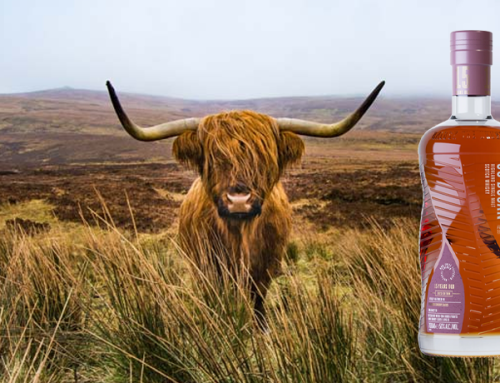At last! A Campbeltown malt (it’s been awhile) – Springbank 10 Year Old. Sadly, Springbank, Glengyle and Glen Scotia are all that’s left of the once 22 distillery-strong [legitimate] whisky industry that existed in Campbeltown around 200 years ago. The Springbank Distillery has operated since 1828 in the middle of Campbeltown. It is still owned by the Mitchell family who not only created the ‘legal’ distillery, but purportedly had much to do with the huge illicit whisky industry in the same town prior to the ‘legitimate’ distilleries construction. Their distillery remains the oldest independent family owned distillery in Scotland. That the Mitchell family are still running the same distillery their ancestors built gives solid evidence of the skill and credibility of the family, and the quality of the product.
Springbank stands apart from most modern distilleries in that it still uses traditional methods in many of the steps of the whisky-making process. Traditional floor malting of the barley is still a part of the process at Springbank. Hand-in-hand with this is the use of traditional under-floor peat fire to dry the malted barley. They also still use the local spring water to steep the barley and in the mashing process, whereas most distilleries now use commercially purified water rather than the local water source.
Firstly – let’s talk about the 2.8 times distilled business.
That doesn’t really roll of the tongue does it. Why not just triple distill it? Well, that wouldn’t make it quite so interesting nor difficult to describe in writing, would it. The whole point of distilling fermented barley (beer without the hops), is to purify it. Normally, the first stage is the wash still , which increases the alcohol from about 5% up to about 20%. It is then sent to the low wine still, where it is taken up to about 72%, then diluted back to 63.5% before going into a cask.
Springbank does it a bit different (hmmm, I’m sensing a recurring theme here…). They use 3 stills – a wash still, then 2 low wines stills.
The reason the Springbank 10 year old is 2.8 times distilled is that the top of the first low wines still is mixed with 20% of the condensate from the wash still, so only 80% goes through the third distillation, the other 20% by passes the middle still, to only receive double distillation. Here’s a diagram to illustrate:

So why triple distill the rest?
Well, this Springbank 10 year old whisky is malted in house, and distilled in a very old fashioned way. It is a ‘craft’ single malt, so it has a lot of flavour. I mean a LOT of flavour, so the triple distillation removes a lot of the power, but by adding in just 20% at the end, it retains its myriad complexity ,while offering a smooth elegant whisky.
Perhaps an easier way to say it is that a small amount of low wines from the first distillation is added strait to the final – more refined and ‘clean’ – distillation. This allows elements of the ‘raw’ flavour to carry through, but the overall whisky produced remain refined and smooth.
Springbank 10 year old is made in very traditional fashion. It is one of the few distillers that still malts its own barley. It is bottled at 46% abv, with no caramel. Flavour-wise, it is just so intense that could be mistaken for a cask strength expression. Don’t be afraid to try it with a drop or two of water to break it down. If you are like me, and get over the initial shock of the intensity of the flavours, particularly citrus and tamarind nose. Taste flavours of curry powder, ham hock, tobacco, coriander seed.
DISTILLERS NOTES
Bottle Size : 700ml
ABV : 46.5% abv
Region : Scotland – Campbeltown
Peated : No
NOSE: Orchard fruit (pear) with a hint of peat, vanilla and malt.
PALATE: Malt, oak, spice, nutmeg and cinnamon, vanilla essence.
FINISH: Sweet with a lingering salty tingle.








